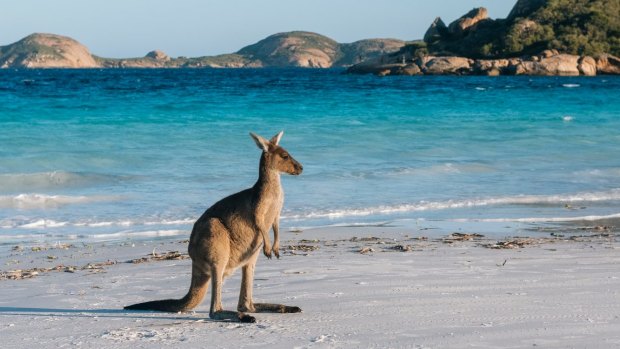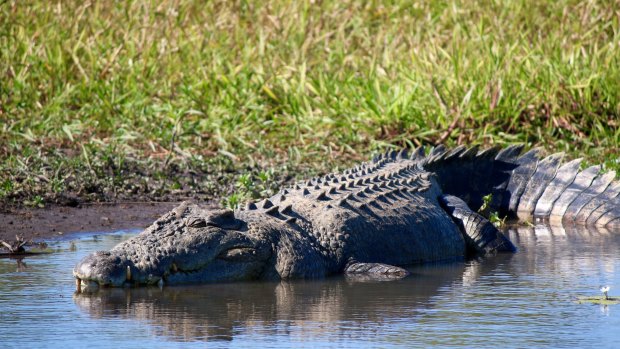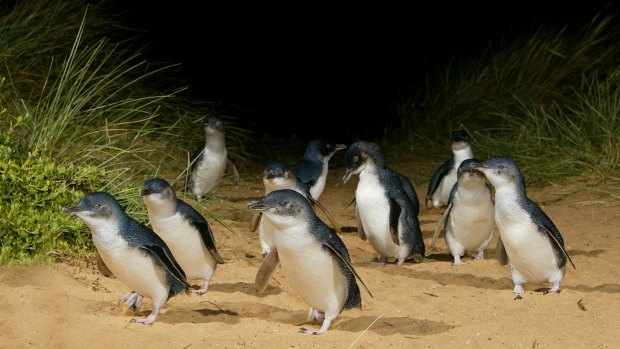By Mark Daffey

The kangaroos found on the island, located off the tip of the Fleurieu Peninsula, are a subspecies of the western grey kangaroos populating the mainlandCredit: Stocksy
Australia is renowned for its unique animal species. Here is where they can most easily be seen in their natural state.
KANGAROOS
Kangaroo Island (where else?), South Australia
When explorer Matthew Flinders and his hungry crew stepped ashore here for the first time in 1802, the furry natives were so unaccustomed to people that they practically hopped into the sailors' cooking pots. The kangaroos found on this island, located off the tip of the Fleurieu Peninsula, are a subspecies of the western grey kangaroos populating the mainland. Head to Flinders Chase National Park at the west of the island and keep an eye out for echidnas, koalas, possums and sea lions as well.
EMUS
Tower Hill Wildlife Reserve, Victoria
The flightless birds representing the other half of our coat of arms are routinely spotted inside this volcanic crater just off the Great Ocean Road. Come to what was Victoria's first national park (declared in 1892) in spring and there's a decent chance that wandering daddy emus will be escorting their lovable offspring around the grassy crater floor.
DINGOES
Fraser Island, Queensland
These highly adaptable canines are found in every state except Tasmania. An estimated 30 packs, each consisting of up to 12 dingoes, populate Fraser Island and they are believed to be the purest genetic strain in the country. The dingoes here have become accustomed to being fed by well-meaning but poorly educated tourists, to the point where they will often trot out onto the beach at the sound of an approaching four-wheel-drive. They are most active at dawn and dusk.
CROCODILES
Kakadu National Park, Northern Territory
Many of our native animals are harmless herbivores. One notable exception is the "salty", the estuarine or saltwater crocodile, which is found in Australia's tropical regions. Kakadu National Park is the easiest place to catch a glimpse of these menacing creatures as they cruise through the beautiful Yellow Water billabong.

A 'salty' found in Kakadu National Park.Credit: MiwaInOz
KOALAS
Raymond Island, Victoria
Jump on the five-minute car ferry (free for pedestrians and cyclists) from Paynesville and follow the 1.2 kilometre Koala Walk trail on this 770-hectare wildlife sanctuary in the Gippsland Lakes area. The koalas, which number several hundred, can be traced back to the 1950s, when 32 were relocated from Phillip Island to safeguard against extinction. You'll also see kangaroos and echidnas here.
WOMBATS
Maria Island, Tasmania
The native wildlife found on Maria Island is so abundant and accessible that the island is often referred to as Tasmania's Noah's Ark. Forester kangaroos, koalas, Tasmanian devils, pademelons – they're all here. But the marsupial Maria Island is known for above others is the wombat – and, best of all, you never need to go far to see them. Step ashore at Darlington and you'll practically trip over them as you wander among the historic ruins of this former convict penal colony.
PENGUINS
Phillip Island, Victoria
Luckily for us, little penguins are creatures of habit, swimming out to sea to feed each day, then returning home to their burrow every night. At Phillip Island, site of the world's largest little penguin colony, visitors can witness them waddle onto Summerland Beach at dusk from a viewing platform. Better still, venture underground to watch them through glass windows.

Phillip Island is the world's largest little penguin colony.Credit: Phillip Island Nature Parks
PLATYPUSES
Eungella National Park, Queensland
Spot one of nature's shyest creatures from the viewing decks of the Broken River as it snakes through the forested highlands west of Mackay. Improve your chances by remaining quiet and still and coming at dawn or dusk. Watch for tell-tale air bubbles as these strange-looking monotremes scour the riverbed for freshwater crustaceans.
TASMANIAN DEVILS
Mountain Valley Private Nature Reserve, Tasmania
As predominantly nocturnal animals, Tasmanian devils are one of the most difficult native species to spot in the wild. The odds improve at Mountain Valley Wilderness, a private nature reserve and eco retreat at the foot of Black Bluff Mountain in Tasmania's north-west. Guests stay in log cabins and there's a good chance of finding a devil on your doorstep after dark.
Sign up for the Traveller Deals newsletter
Get exclusive travel deals delivered straight to your inbox. Sign up now.